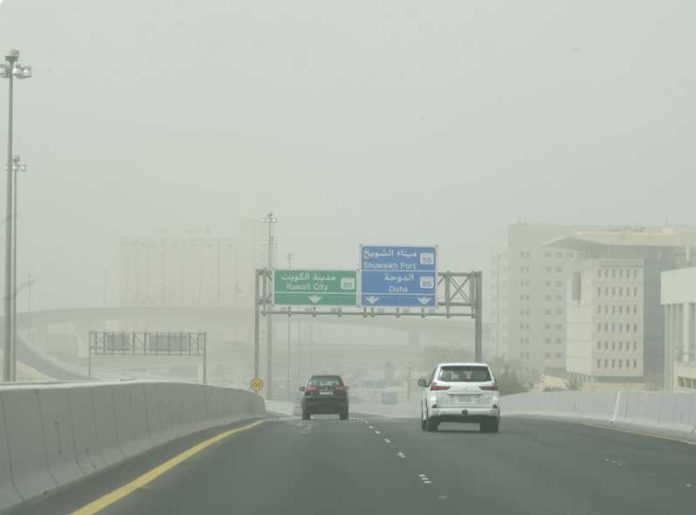The Kuwait Institute for Scientific Research signed today, in cooperation with the United Nations Human Settlements Programme, has begun work on the “Adaptation and Resilience” project with a 4 million dinars fund provided by the Kuwait Fund for Economic Development which will be extended over four years to prevent the cross-border sand and dust storms coming from southern Iraq, for four consecutive months.
The contract was signed in the presence of Al-Qaim with the KISR Director General for Works Dr. Manea Al-Sedirawi, and the head of the Regional Office for the Arab Gulf States in the United Nations Human Settlements Program, Dr. Amira Al-Hassan, reports Al-Qabas daily.
Al-Sedirawi said that the project, which will begin work within a few weeks, aims to identify the causes of sand and dust storms, in terms of climatic, geological and chemical aspects, and to protect and raise the capabilities of adaptation and resilience in areas prone to storm and absorb their negative effects, and reduce their occurrence, in addition to achieving a set of development goals and the production of measurement mechanisms and indicators to mitigate the effects of storms.
He explained that the project is being implemented in two regions in the south of Iraqi lands, on a combined area of 8212 square kilometers which are considered major sources of dust storms that hit Kuwait from 2020 until the end of 2022.
Al-Sedirawi said that the losses resulting from sand and dust storms were estimated annually at 190 million dinars, while the project, which will be implemented through the United Nations program at a value of 4 million dinars, and targets specific areas located 250 kilometers north of the Kuwaiti border and has a direct impact in the country by up to 40% of the total dust that Kuwait and southern Iraq and the eastern region of Saudi Arabia, Qatar, Bahrain and parts of the Emirates are exposed to.
He added the dust storms caused the closure of ports and roads, causing great economic losses, in addition to health and environmental damage, and cross-border sandstorms increased from 60 tons per square kilometer in 2006 to about 500 tons per square kilometer in 2022.
He pointed out that the project will work to stabilize the soil in the regions of northern Iraq, and thus reduce the dust that crosses the Kuwaiti borders.
Al-Sedirawi stressed that an innovative infrastructure will be designed to rehabilitate areas affected by sand and dust storms in a sustainable manner, and mitigate their harmful effects, based on many methods, including fixation with fungal plants and trees, and with community participation and cooperation between the authorities of the two countries in Kuwait and Iraq.
He added that the project will place Kuwait in a leading position regionally, to enhance the ability of cities to withstand sand and dust storms and pointed out that the project will be carried out through the use of heavy mechanisms such as excavators and soil dumpers to place a heavy clay layer which gives an opportunity for natural plant growth, and the cultivation of fungal and drought-resistant trees such as windbreaks to help stabilize the soil and increase plant density
The project goals include:
► Knowledge of the climatic, geological and chemical causes of sand storms
► Protect the capabilities of adaptation and resilience in storm areas and absorbing their negative aspects
► Reduce the occurrence of sand storms and achieving the goals of sustainable development
► Produce measuring mechanisms and indicators to mitigate the effects of dust storms
Application mechanism
► Using heavy machinery such as excavators to place a heavy mud layer
► Adhesion of the clay layer to the fall of rain and its exploitation in planting plants
► Cultivation of windbreaks that help stabilize the soil and increase plant density
► Digging a canal to feed the cultivated areas and constructing wells and irrigation canals

















